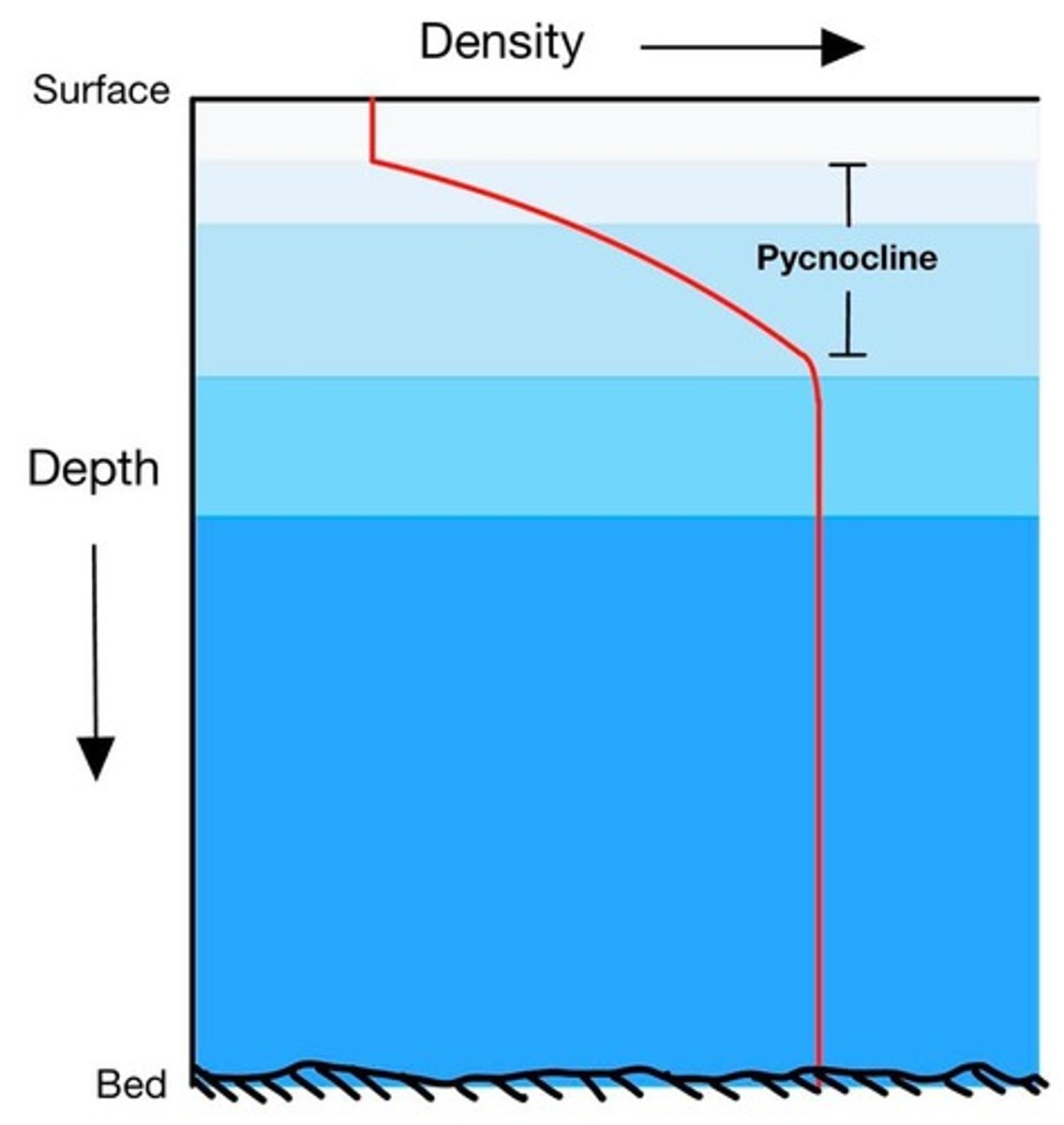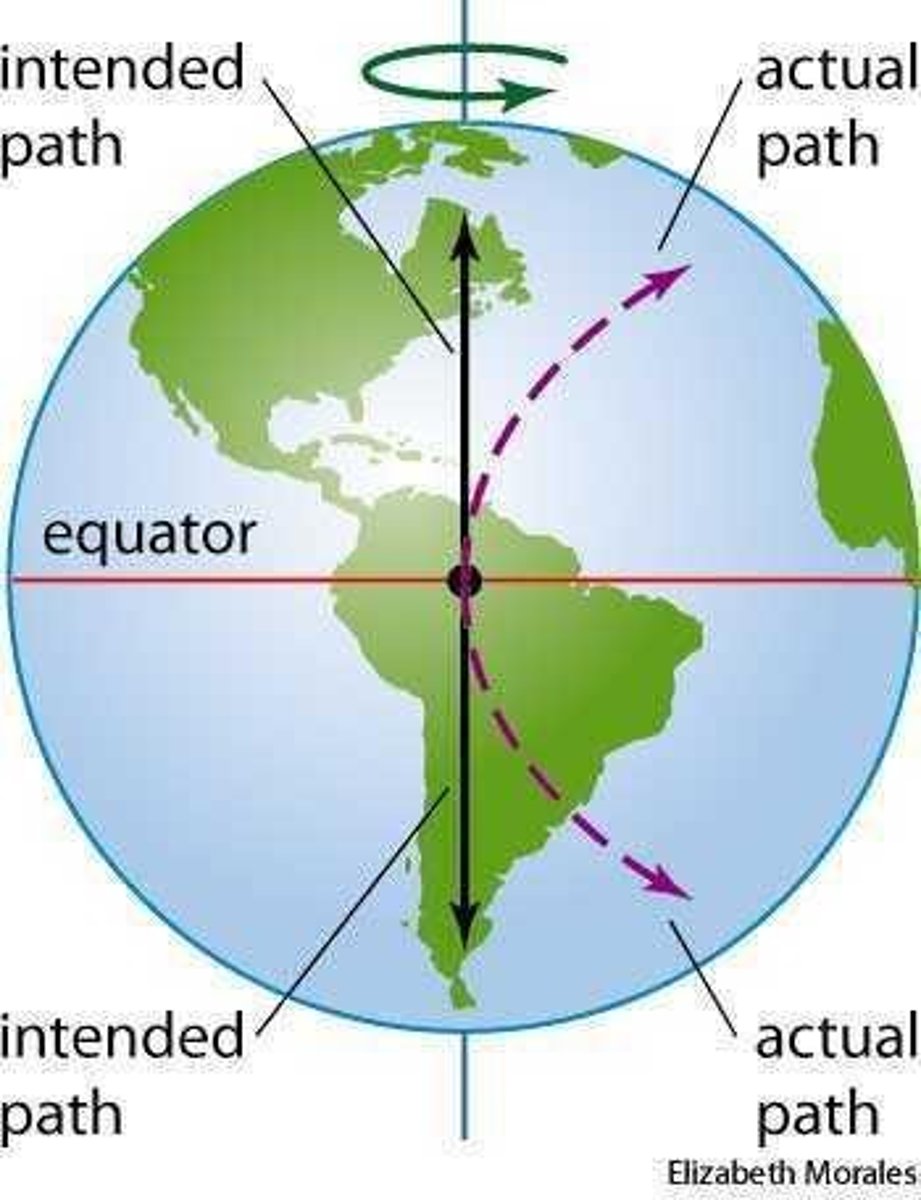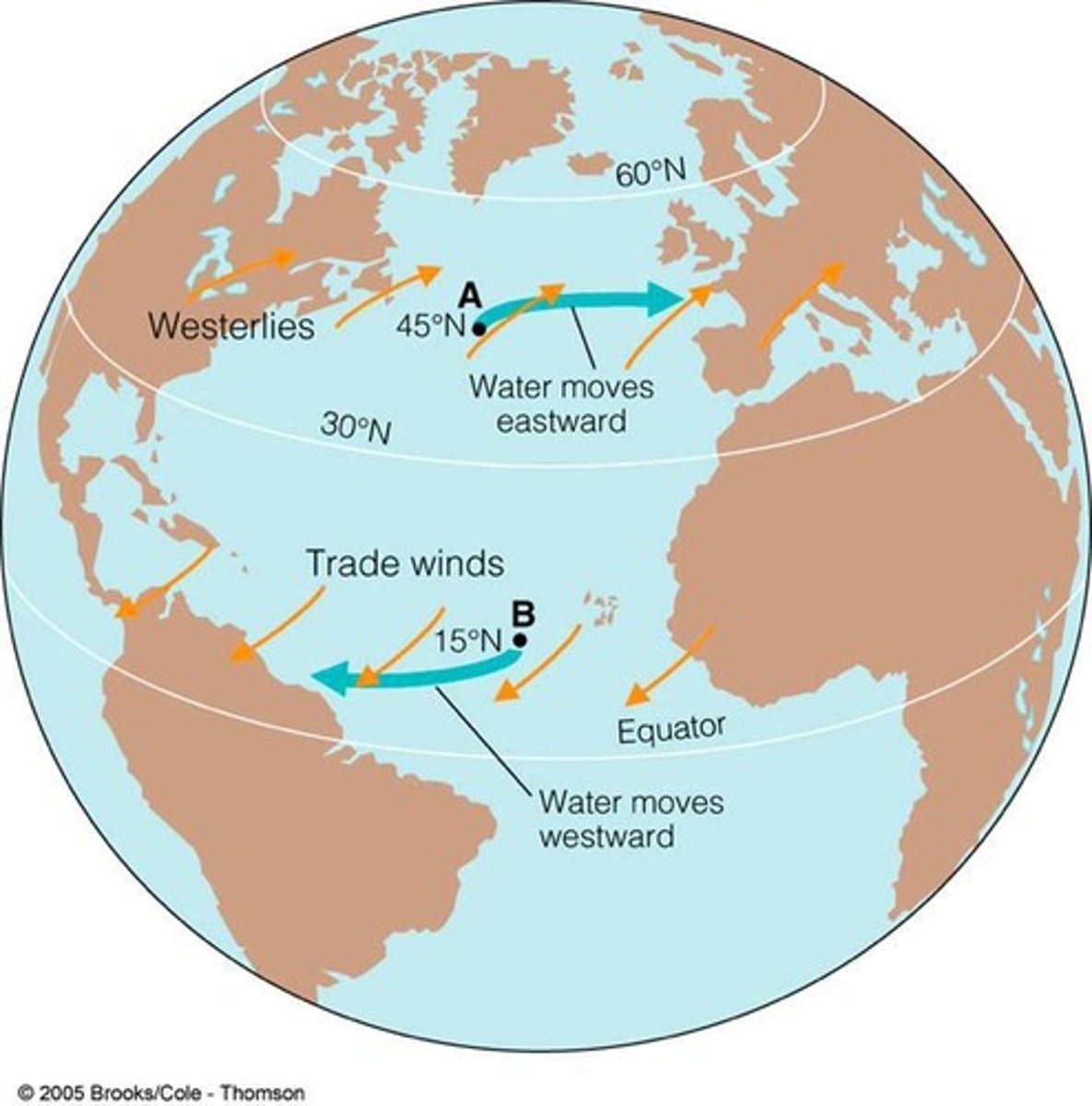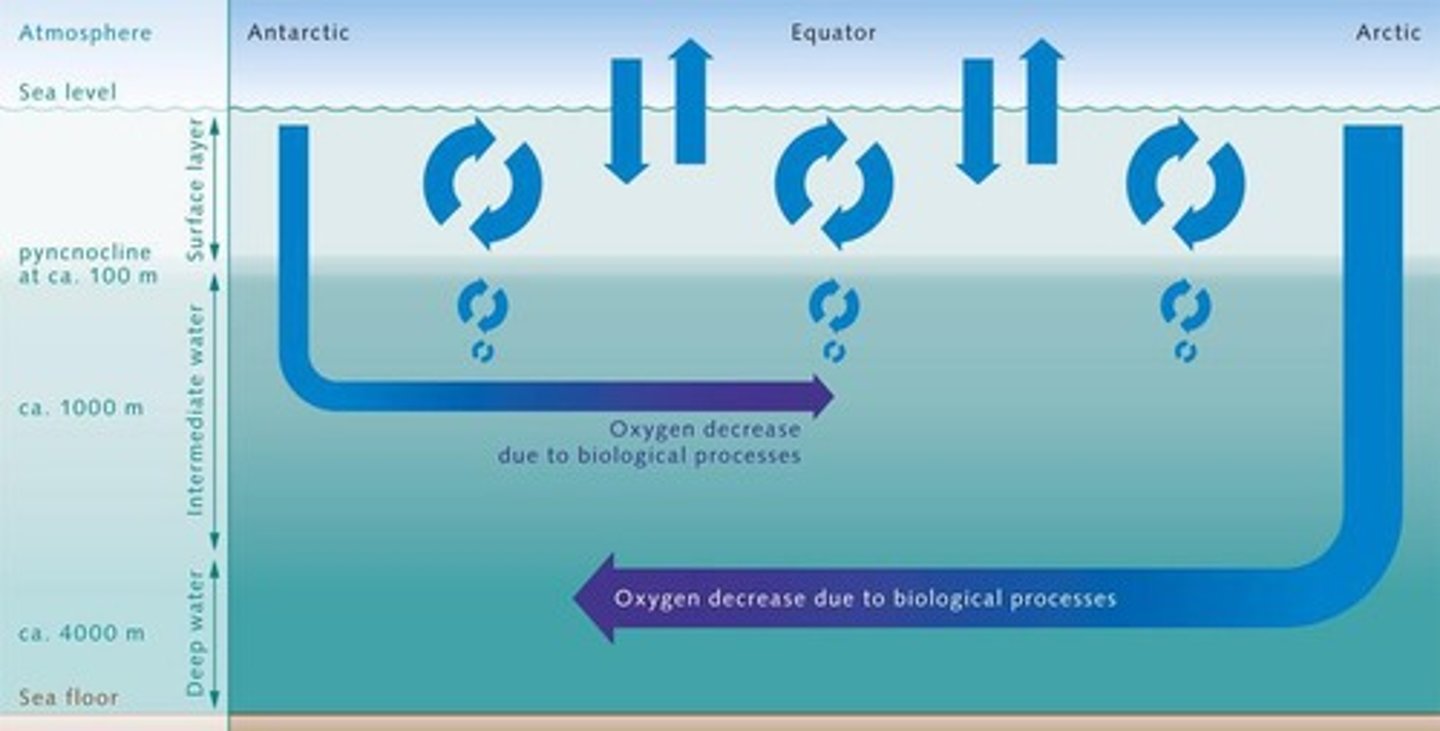BIO-362 Marine Ecology Lecture 5
1/19
There's no tags or description
Looks like no tags are added yet.
Name | Mastery | Learn | Test | Matching | Spaced |
|---|
No study sessions yet.
20 Terms
Ocean is highly effective at absorbing light (t/f)
True, by 3 feet, only 45% of solar energy remains
Part of EM spectrum that reach deepest into the ocean
Blue & green light
Turbidity
Influences how deep light can penetrate
Ocean requires little heat to raise temperature (t/f)
False, high specific heat
Ocean currents significantly impact the global climate (t/f)
True, currents store and transport heat
Thermocline
Temperature gradient with depth, varying by region
Thermocline in tropics
Strong and permanent
Thermocline in temperate regions
Fairly strong and seasonal
Thermocline in polar regions
Little to none, constant temperature
Salinity
Measured as the total of all individual dissolved salt ions
Variations in sea surface salinity is caused by
Differences in evaporation and precipitation levels, and freshwater input
Halocline
Strong vertical salinity gradient that affects the density of seawater
Pycnocline
Density gradient created by the interaction of ocean circulation, temperature, and salinity
(halocline + thermocline)

Coriolis effect
Force acting on mass moving in a rotating system, causing it to move perpendicular to the direction of motion and the axis of rotation, strongest at the poles

Ekman transport
Wind-driven water transport deflected by the Earth's rotation, descends in a spiral motion with decreasing speed
Ocean gyres
large, slow, circular system of circulating ocean currents, clockwise -> NH, counter-clockwise -> SH

Upwelling
Upward movement of cool, nutrient-rich deep water

Causes of upwelling
Winds, coriolis effect, and ekman transport
Thermohaline circulation
Movement of water driven by temperature and salinity differences affecting density, causing deep water formation and transport
Great ocean conveyor belt
Global thermohaline circulation that transports warm surface currents and cold deep currents